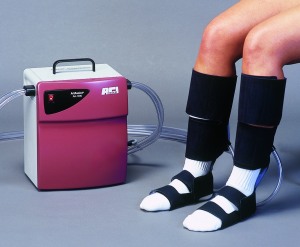 Previously, I posted a whole article about how it’s actually not dangerous to use compression therapy on an ischemic limb. However, that’s not the only misconception that we’ve cleared up at ACI Medical. This article exposes a couple more myths that have been known to float around, and how we’ve found evidence to set the record straight.
Previously, I posted a whole article about how it’s actually not dangerous to use compression therapy on an ischemic limb. However, that’s not the only misconception that we’ve cleared up at ACI Medical. This article exposes a couple more myths that have been known to float around, and how we’ve found evidence to set the record straight.
Even after some experts dismissed the idea of intermittent pneumatic compression (IPC) as a viable treatment for patients with PAD, the creators and developers of the ArtAssist® device put their theories to the test nonetheless.
Pioneered and developed with vascular surgeons, the ArtAssist® device continues to be the leader in IPC therapy for non-surgical PAD patients with varying levels of severity.
ArtAssist® IPC therapy should not be overlooked or dismissed without having considered the clinical evidence:
in fact, it has both saved limbs and improved patient quality of life.
MYTH: Critically ischemic limbs are maximally vasodilated.
False.
In fact, the ArtAssist® device’s first physiological clinical trial disproves this myth. Even without having been optimized to the extent it is now, the prototype yielded results that suggested transient vasodilation.
Later, in 2005, a study conducted by Professor Labropoulos of SUNY not only confirms the earlier findings, but also suggests that increasing the arteriovenous pressure gradient with foot & calf IPC therapy contributes greatly to significantly increased blood flow in the subjects’ popliteal, gastrocnemial and collateral arteries. Skin blood flow also improved significantly in their findings.
MYTH: The ArtAssist® device is the same as any other arterial pump with similar function.
False.
We encourage you to ask yourself these two important questions when considering other devices which claim to perform as efficaciously as the ArtAssist® device:
1. Is it optimized for arterial disease? And
2. Is there clinical evidence and support for this specific device?
Only the ArtAssist® device satisfies each of these questions with its thorough progression of clinical studies: this device alone has been adjusted and optimized from its initial prototype over the past two decades to effectively treat even the most severe cases of PAD.
- Physiological
- Optimization
- Intermittent Claudication
- Limb Salvage
- Critical Limb Ischemia (CLI)
- Arteriogenesis (Collateralization)
Currently, studies are being conducted to explore the ArtAssist® device’s efficacy for adjunct therapies, such as stem cell treatment and gene expression.
The Bottom Line.
Your patient’s non-reconstructable limb will not wait for hearsay on this form of therapy.
We are here to let you know that therapy with the ArtAssist® device gives patients a dependable option that continues to help non-surgical limbs across the country.
Make the decision that could save your patient from amputation.
References
Augmentation of blood flow in limbs with occlusive arterial disease by intermittent calf compression. Van Bemmelen, P.S.; Mattos, M.A.; Faught, W.E.; Mansour, M.A.; Barkmeier, L.D.; Hodgson, K.J.; Ramsey, D.E.; and Sumner, D.S. Springfield, IL. Journal of Vascular Surgery 1994; 19:1052-8.
Hemodynamic effects of intermittent pneumatic compression in patients with critical limb ischemia. Labropoulos, N.; Leon, L.R.; Bhatti, A.; Melton, S.; Kang, S.S.; Mansour, A.M.; and Borge, M. The Department of Surgery, Loyola University Medical Center, Maywood, IL. Journal of Vascular Surgery, October 2005; Volume 42, Number 4: 710-716














